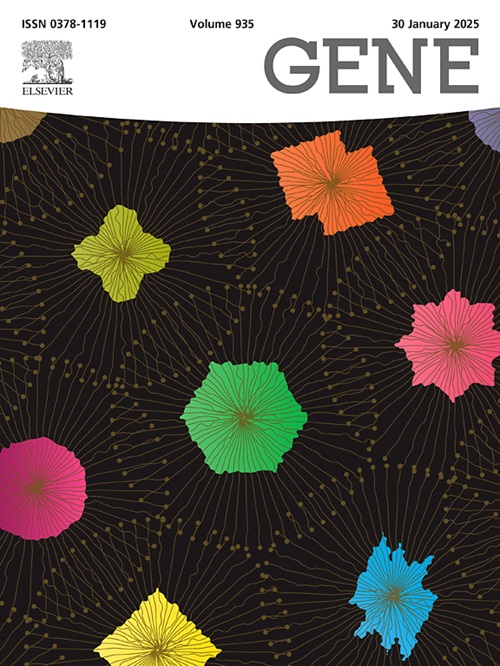黄檗线粒体基因组的全新组装和特征描述揭示了三个重复介导的重组。
IF 2.6
3区 生物学
Q2 GENETICS & HEREDITY
引用次数: 0
摘要
黄柏(Phellodendron amurense Rupr.)是一种稀有草本植物,因其药用和生态意义而闻名于世,但其线粒体水平的遗传学研究至今仍未完成。本研究首次通过结合 Illumina 和 Nanopore 测序数据的混合策略,对 P. amurense 的完整线粒体基因组进行了系统组装和注释。线粒体基因组跨度为 566,285 bp,GC 含量为 45.51 %,结构为两个环状分子。我们的综合分析确定了 32 个蛋白质编码基因 (PCG)、33 个 tRNA 基因和 3 个 rRNA 基因,以及 181 个简单序列重复序列、19 个串联重复序列和 310 个分散重复序列。值得注意的是,由于重复介导的同源重组,预测出了多种基因组构象。此外,我们还组装了叶绿体基因组,确定了21个线粒体质粒序列,为细胞器基因组的相互作用提供了洞察力。线粒体 PCGs 中共有 380 个 RNA 编辑位点被预测出来,从而加深了我们对基因调控和功能的了解。利用来自 30 个物种的线粒体 PCGs 进行的系统进化分析揭示了进化关系,证实了 P. amurense 和柑橘物种之间的同源性。这项奠基性研究为芸香科植物提供了宝贵的遗传资源,有助于进一步研究植物线粒体基因组的遗传进化和分子多样性。本文章由计算机程序翻译,如有差异,请以英文原文为准。
De novo assembly and characterization of the complete mitochondrial genome of Phellodendron amurense reveals three repeat‐mediated recombination
Phellodendron amurense Rupr., a rare herb renowned for its medicinal and ecological significance, has remained genetically unexplored at the mitochondrial level until now. This study presents the first-ever systematic assembly and annotation of the complete mitochondrial genome of P. amurense, achieved through a hybrid strategy combining Illumina and Nanopore sequencing data. The mitochondrial genome spans 566,285 bp with a GC content of 45.51 %, structured into two circular molecules. Our comprehensive analysis identified 32 protein-coding genes (PCGs), 33 tRNA genes, and 3 rRNA genes, alongside 181 simple sequence repeats, 19 tandem repeats, and 310 dispersed repeats. Notably, multiple genome conformations were predicted due to repeat-mediated homologous recombination. Additionally, we assembled the chloroplast genome, identifying 21 mitochondrial plastid sequences that provide insights into organelle genome interactions. A total of 380 RNA-editing sites within the mitochondrial PCGs were predicted, enhancing our understanding of gene regulation and function. Phylogenetic analysis using mitochondrial PCGs from 30 species revealed evolutionary relationships, confirming the homology between P. amurense and Citrus species. This foundational study offers a valuable genetic resource for the Rutaceae family, facilitating further research into genetic evolution and molecular diversity in plant mitochondrial genomes.
求助全文
通过发布文献求助,成功后即可免费获取论文全文。
去求助
来源期刊

Gene
生物-遗传学
CiteScore
6.10
自引率
2.90%
发文量
718
审稿时长
42 days
期刊介绍:
Gene publishes papers that focus on the regulation, expression, function and evolution of genes in all biological contexts, including all prokaryotic and eukaryotic organisms, as well as viruses.
 求助内容:
求助内容: 应助结果提醒方式:
应助结果提醒方式:


